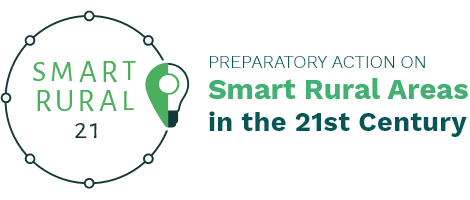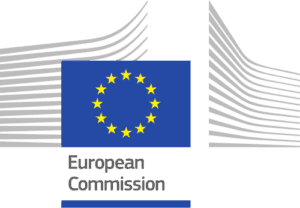Smart Solutions
Citizen involvement through Systemic Consensing
Purpose
Systemic Consensing is a method to take decisions in groups, i.e. identifying the option that is viable and has the least resistance from all group members. The method makes all opinions heard and leads to long lasting solutions.
Systemic Consensing was developed by Erich Visotschnig and Siegfried Schrotta in order to overcome the shortcomings of the majority vote decision making process. Majority votes – where 50 % + 1 vote make a valid decision – can lead to infightings and deadlocks instead of fostering cooperation within groups. Another shortcoming is that those who speak louder often get more attention in the decision making process. Systemic Consensing allows the group to find solutions that work for everyone, that has the least potential for conflict and dissatisfaction in the group.
How does it work?
The method works in four phases:
0. Getting acquainted
Make sure everyone understands the decision-making process. Explain the method and ideally go through one or more examples.
1. Formulate the question
The group identifies the question that should be answered (e.g. solutions to reduce traffic in the village). This question needs to be open-ended and must not be a simple yes/no question.
2. Collecting options
In the second phase all group members name possible solutions to the question/problem. All ideas are equal at this stage and must not be commented, discussed or rated. A specific brainstorming method may be applied here (e.g. the participants assume different roles to look at the question at stake).
3. Measuring resistance
Now it is time to rate all ideas mentioned by every group member on its own. Every group member assigns between zero and ten ‘resistance points’ to each proposal. The scale ranges from ‘I have no objections, I can support this solution’ (= zero resistance points), to ten points, meaning ‘strong resistance, I have serious doubts about this proposal’. This can be done overt or in a ballot.
If it is done publicly, all group members speak after each other to each proposal, so that every voice is heard. Facilitators need to ensure that members do not influence each others’ voting while discussing. For instance, all group members might receive eleven cards with pre-printed numbers (0 to 10) on them. The facilitator then calls out every proposal and all members show their resistance points (printed on the card) at the same time. Then, the facilitator asks each member to call out his/her resistance points – one after the other.
All ratings are recorded in a matrix.
4. Taking a decision
After all ideas have been rated, all points are added up for each proposal. The proposal with the least points has the least resistance from the group and is thus the one closest to consensus. This is the option the group has decided upon.
A set of questions which can guide the process include:
- Who is affected by the decision/issue?
- To which extend are they affected (and who defines this)?
- Who can help in finding a solution?
- Who is allowed to decide? Who has more say/power (formal or informal)?
- What do we want to achieve?
- Is the question properly formulated?
- Are the preconditions for the issue and proposals clear and formulated?
- Is the decision binding (for whom, to which extent)?
- Are responsibilities assigned to implement the decision and are the resources sufficient?
- Do we want to measure the outcome and impact of the solution?
Optional steps:
- You may add an additional phase between phase 3 and 4 that allows all group members to alter their proposal after all resistance points have been added up. This allows ideas to be improved, guided by the question: How do I need to alter my proposal, so that your resistance diminishes?
- You may add a ‘zero option’, e.g.: ‘leave everything as it is, don’t change anything’. This allows everyone to rate this option too.
Who is the tool for?
The tool may be used by any group that needs to decide on a range of options.
Dos and Don’ts
- Before taking real decisions using Systemic Consensing all group members need to understand the method well. Involve an experienced and independent facilitator to lead the workshop or get your own staff trained in it.
- All group members need to be involved in the question at stake and have the same and detailed information.
- Don’t let the louder ones dominate the group. Keep the balance among the participants and give the more reticent people the space to express their opinions as well. If you are the facilitator, make sure to address this.
How the tool was already used?
In Munderfing, a village in Upper Austria, Systemic Consensing is applied in two different ways.
In the village council and its ancillary commissions, the method is applied to seek solutions in specific areas (e.g. traffic management, decision on social activities, decision regarding the closure of railway level crossings) and also to set a priority list in the yearly budgeting process.
The second option invites all citizen to be part of the decision making process. Any citizen may bring forward a topic at any time (through the village website, a list of signatures, …) that should be handled by the village council. As soon as 2 councilors – out of a total of 25 – vote in favor of this issue, the issue is put on the agenda and it is either decided upon in the village council itself or the council commissions a working group. If it is the later, citizens/volunteers are invited to join the working group. The working group applies systemic consensing as its decision-making tool. It can host an open council meeting to invite all citizens to be part of the systemic consensing decision making process.
Josef Maiwald
‘For you as a manager, it is not just about making good decisions. Equally important is to implement them together with your employees in a sustainable way. The cooperative leading, or “leading at eye-level” of self-responsible and self-confident employees is becoming increasingly important. Through “Systemic Consensing” (SC) you create a good basis for this.’
Language : English

